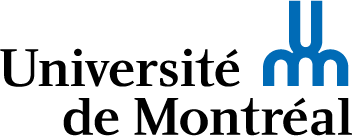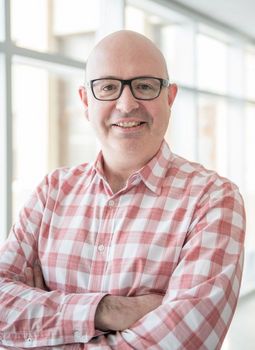$1 million U.S. for a project co-founded by UdeM
- UdeMNouvelles
04/15/2025
The 2025 Breakthrough Prize in fundamental physics partly honours the many scientists here who've been at the forefront of a decades-long experiment using the Large Hadron Collider, in Switzerland.
This year's Breakthrough Prize in fundamental physics goes to the thousands of scientists worldwide who for years have worked on four research projects – one partly founded by Université de Montréal – using the Large Hadron Collider (LHC) in Switzerland.
Awarded this month in Los Angeles, one-third of the U.S. $3-million prize honours researchers on ATLAS, the experiment that in 2012, along with one called CMS, led to the discovery of the Higgs boson that gives mass to other fundamental particles like electrons and quarks.
"UdeM has made multiple contributions to the ATLAS experiment," said UdeM physics professor Jean-François Arguin, a member of the project at the European Organization for Nuclear Research (CERN), on the French-Swiss border near Geneva.
"I've devoted my entire research to this project since starting at UdeM as a professor in 2012," said Arguin, who previously worked at the U.S. Department of Energy's Lawrence Berkeley National Laboratory, in California.
"And many UdeM students and postdoctoral researchers have worked on ATLAS over the years," he added. "For all of us here, the Breakthrough is a tremendous recognition: it celebrates our incredibly detailed exploration of the energy frontier in physics."
13,508 scientists honoured
Besides the ATLAS and CMS experiments, both of which are awarded $1 million U.S., the 2025 Breakthrough Prize in fundamental physics recognizes two others, ALICE and LHCb, each awarded U.S. $500,000.
In total, 13,508 scientists were involved in the four projects. They were identified as co-authors of studies based on LHC data from the experiments that were published between 2015 and mid-2024. Of those, more than-one third – 5,345, including Arguin – worked on ATLAS.
None in any of the physics experiments will gain financially from the prize, however.
Instead, they agreed collectively that the Breakthrough Prize Foundation donate all of the $3-million U.S. to the CERN & Society Foundation, enabling doctoral students from member institutes to get grants to come do research at CERN, and that includes the ATLAS program.
ATLAS is one of the largest and most complex scientific instruments ever built.
Longer than three semi-trailers
A general-purpose particle detector measuring over 40 metres long (the length of three semi-trailers) and around 25 metres high (half the height of the Arc de Triomphe), it was designed to investigate the fundamental building blocks of matter and the forces governing the universe.
Its systems track particles produced in particle collisions at unprecedented energies, enabling discoveries like the Higgs boson and probing for a new physics beyond the so-called Standard Model that describes the fundamental particles and their interactions, excluding gravity.
ATLAS's contributions to knowledge of particle physics have included detailed measurements of Higgs boson's properties, studies of rare processes and matter-antimatter asymmetry, and the exploration of nature under the most extreme conditions.
Honouring research in fundamental physics as well as in life sciences and mathematics, the Breakthrough Prizes were established in 2012 by investor Yuri Milner, Facebook CEO Mark Zuckerberg, Google co-founder Sergey Brin and the former CEO of 23andMe, Anne Wojcicki.
Marketed as "the Oscars of science," the Breakthroughs pay out more than any other science prize: roughly three times a Nobel. This year’s awards come amid controversy, as U.S. president Donald Trump and his Republican administration are slashing jobs and grants in the sciences.
More about UdeM and ATLAS
From its start in 1992, Université de Montreal scientists have played a foundational role in the ATLAS project. Three UdeM professors in particular contributed to its development over the years: Jean-François Arguin, Claude Leroy (now retired) and Georges Azuelos (also retired).
Making extensive use of machine-learning techniques they and their teams helped revolutionize how electrons are reconstructed and identified, explored in depth the highest energy LHC collisions, and circumscribed putative new theories such as supersymmetry and composite Higgs bosons.
In addition, UdeM scientists played a major role in the construction of the current ATLAS calorimeter, and are currently highly involved in building a new tracking device to operate ATLAS over the next decade.
Media contact
-
Jeff Heinrich
Université de Montréal
Tel: 514 343-7593













